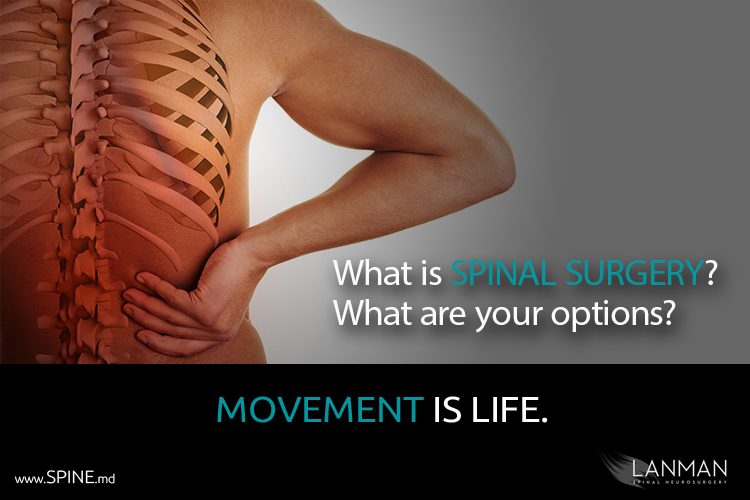Your recovery is a partnership to grow strength and preserve movement.
“A stitch in time saves nine.”
That’s what my grandmother used to say. You can take that to mean that acting promptly in the short term saves effort in the long run. You can also apply it to the idea that it is always better to be prepared with information and insight. My granny might add, “Being forewarned is forearmed.”
Healing from any surgical procedure is one of those things that I believe applies here. It certainly applies to my patients here at my private practice in Beverly Hills, CA and my patients at Cedar-Sinai Medical Center in Los Angeles.
First off, it often takes months to a year to heal from back surgery. That’s why acting in accordance with your doctor’s instructions is so important. Compliance speeds recovery and saves everyone from all sorts of trouble. So, I congratulate you on reading this article, because it means you’re taking your surgery very seriously. The patients with the best outcomes are often the ones who are best prepared. I encourage patients to read and learn about the personal effort that’s needed to strengthen the therapeutic value of the procedure.
For example, I recommend a postoperative rehabilitation program that includes stretching, strengthening, and conditioning. Over the years, I have found that this kind of recovery program is an important part of any successful spine surgery. Patients groan a little; some may even actually complain that it’s too much work. That’s when I tell them that 50% of the outcome of the spine surgery is from my work as a surgeon. The other 50% is the patient’s cooperation and persistence.
There’s been quite a bit of research that shows patients have a great deal of control over the outcome of any surgical procedure. Even very minor ones. That’s why I try to give my patients as much information as I can to help them visualize how they are going to rehabilitate themselves after the surgery.
The general rule is that the more involved the back surgery, the longer the patient will experience preoperative symptoms – e.g., pain, discomfort, stiffness, and so on. Another rule that is especially pertinent with back surgery is that there is a direct correlation between postoperative recovery time and the length of time that a patient has had the condition that led to the surgery.
In other words, if you have endured back pain for many years due to severe disc degeneration, it is likely that your recovery will take several months longer than a patient who has had a shorter duration of symptoms. I also believe that in most cases, it is more reasonable to continue with rehabilitation after spine surgery than to consider additional surgery to solve ongoing discomfort. Of course, I’ll make exceptions if there is an additional disc herniation or other failure.
More rehabilitation after back surgery?
After spine surgery, careful follow-up and rehabilitation is crucial. If the patient continues to experience postoperative pain, I may decide that additional surgery is warranted, especially if I find new problems that could be contributing to the patient’s pain. Some problems can be anticipated. For example, if you are spinal fusion surgical patient, I often order a CAT scan at three months postoperatively to assess how the bones are healing as this can be a new source of pain.
Sometimes patients will come back later and tell me that they find articles about “failed back surgery syndrome.” This is an excellent time to learn that there is no such “syndrome” – at least not from the clinical standpoint. There also are no ‘typical’ scenarios where patients experience either longer rehabilitations or additional problems. Every patient is different thus every surgical experience is different.
For example, a patient recovering from a pinched “L5” nerve may have secondary nerve healing issues. There could be mimic pain like piriformis syndrome (which is a real syndrome, by the way). In these cases, the nerve may take an extended time to heal which may require additional physical therapy.
Let’s take this example one step further. Un-pinching the L5 nerve may relieve the original pain or sciatica, however, the patient may experience postoperative aches in the buttocks, numbness, and tingling in the extremities (arms or legs). Some patients may have soreness or sensitivity in the skin along the nerve path. If the compression has been ongoing for a long time, some patients may have a rebound type of pain with burning along the same path, particularly at night.
I’ve read patient accounts that suggest that their problems could be the result of scar tissue formations near the nerve root. This is called epidural fibrosis, and it is not a common occurrence after back surgery. In my experience, I believe that the focus on scar tissue is extremely overrated. It is a rare patient that I see who has true epidural fibrosis that needs additional surgery.
Patients being Patient
Patients will not feel that the back surgery was successful until they complete full recovery (i.e., without pain or discomfort). It’s only natural to feel anxious when recovery is extended. In some cases, there could be some ‘recovery fatigue.’ But patients must be patient! There are treatment modalities that can help alleviate symptoms while healing is ongoing.
The fact is, there are often secondary problems that must be worked out after back surgery. Remember that you are not the first nor the only patient to have this experience. If any of my patients has recovery pain beyond what is expected, what I recommend for follow-up is completely individualized to the patient’s particular problem or situation.
My approach is bolstered by considerable experience and the knowledge that recovery is a partnership. I WANT what you want: I want you to be greater than better.
###







